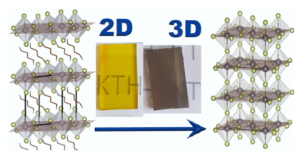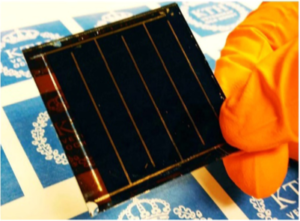Background
Emerging solar cell technologies, such as dye-sensitized, quantum dot, and perovskite solar cells, have the possibility of dramatically decreasing the cost of solar energy production. These technologies share the common features of relying on solution chemistry and large-scale fabrication methods. Emerging solar cell technologies have thus far been limited by either low power conversion efficiencies or poor long-term stability. State-of-the-art emerging solar cells can now match (or exceed) existing technologies at either efficiency or stability, but not both. The research on emerging solar cells has focused on increasing efficiencies and stability to comparable levels of existing technologies. As well, emerging solar cell technologies can be applied where conventional solar is ineffective: low-light conditions, flexible materials, and lightweight applications.
Aims
The aims of our research are to understand the working and decomposition mechanisms in state-of-the-art emerging solar cell technologies. We aim to use these understandings to develop more efficient and more stable solar cells.
Approaches
We have a holistic approach these challenges. We synthesize new molecules and materials. We characterize optical and electronic properties. These methods are varied, but include time-resolved and steady-state optical and electronic spectroscopies, electron microscopies, and X-ray methods. In collaboration with groups at KTH and Uppsala, we use computational methods to study how chemical structure influences electronic structure. Lastly, we make and test complete solar cells based on our materials to have proof-of-concept devices.
Keywords
Perovskite, dye-sensitized, quantum dot
Research Group
Project leader
James M. Gardner, KTH
Other project members
Links and references
Citations
Additional funding (apart from StandUp for Energy)Energimyndigheten, SSF, Stiftelsen Olle Engkvist Byggmästare


